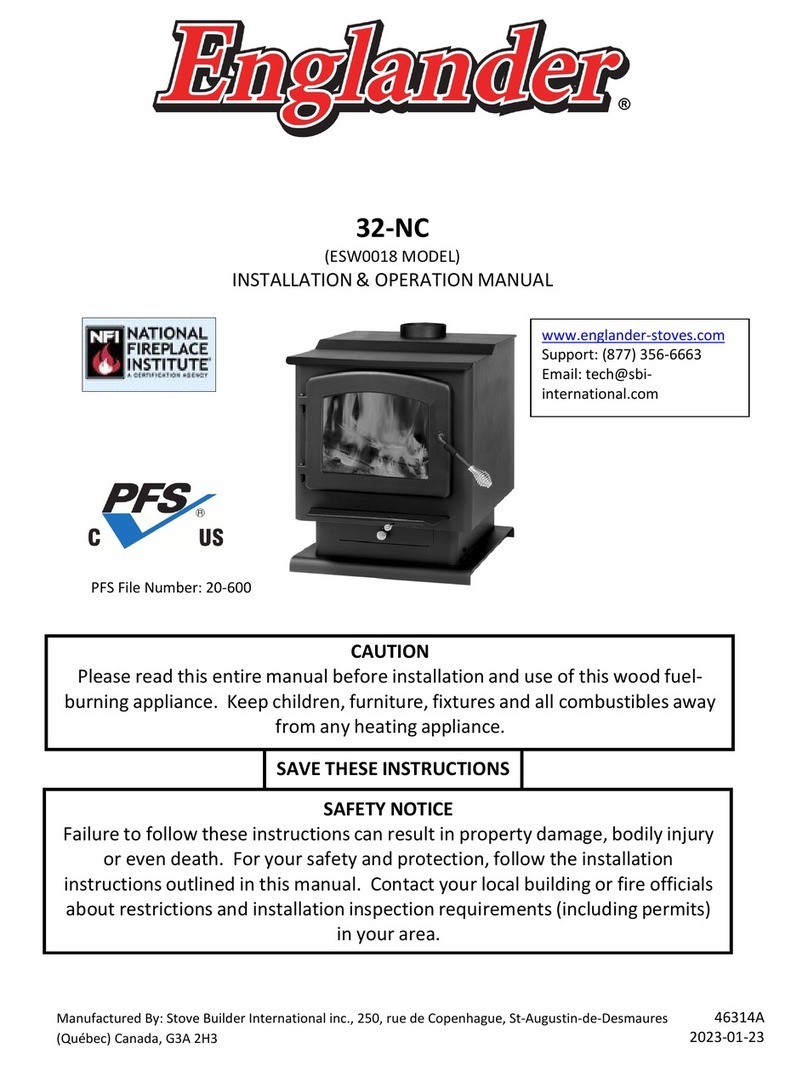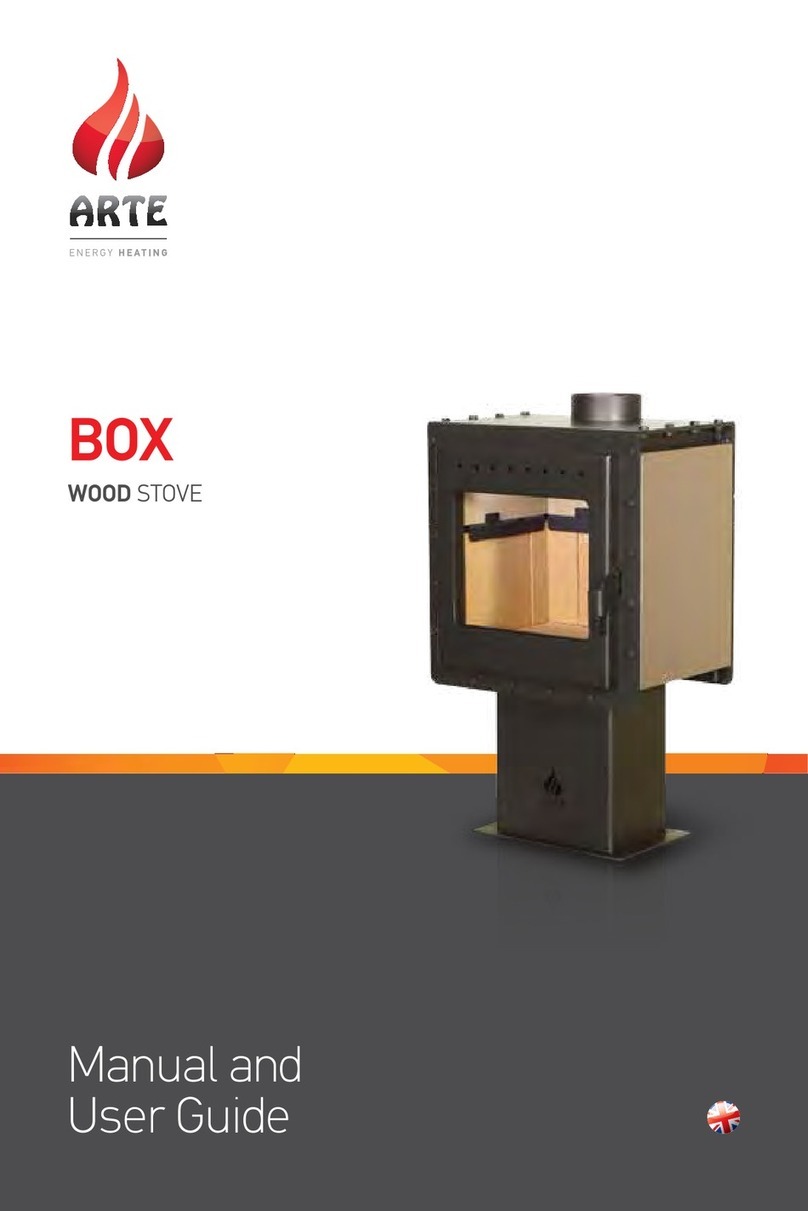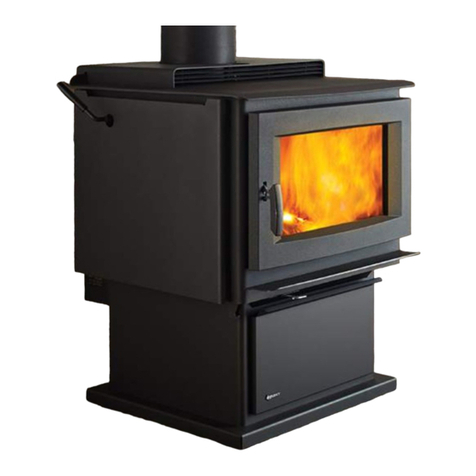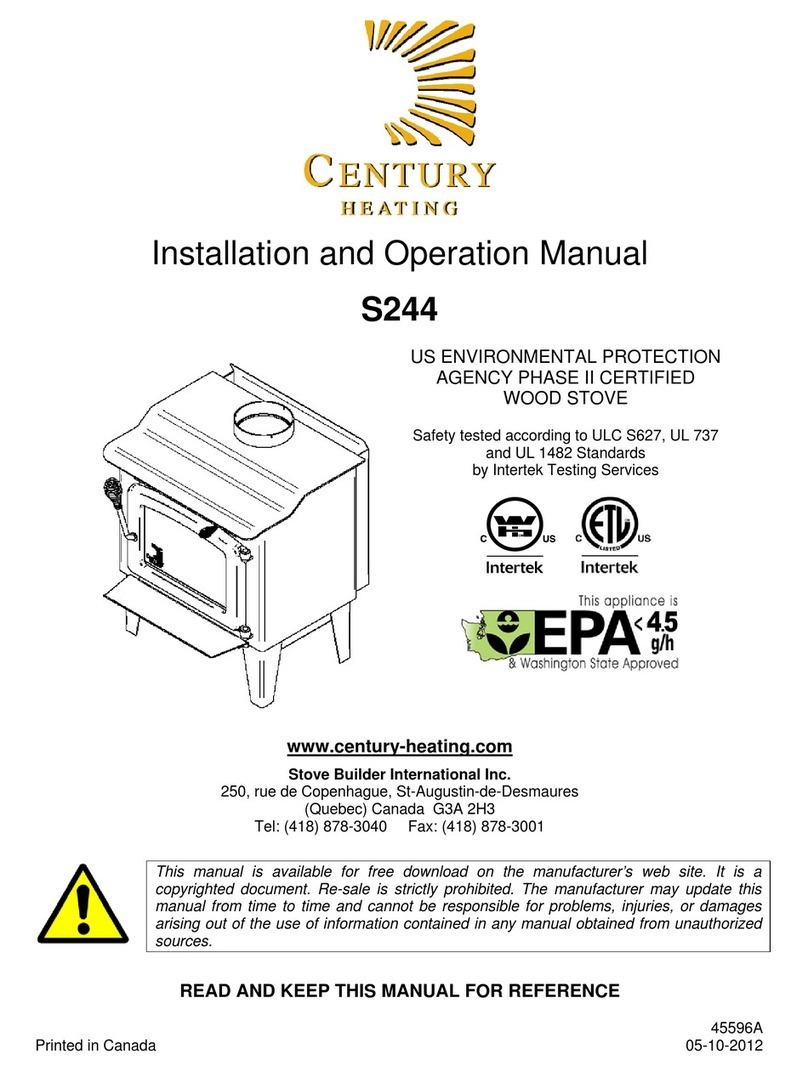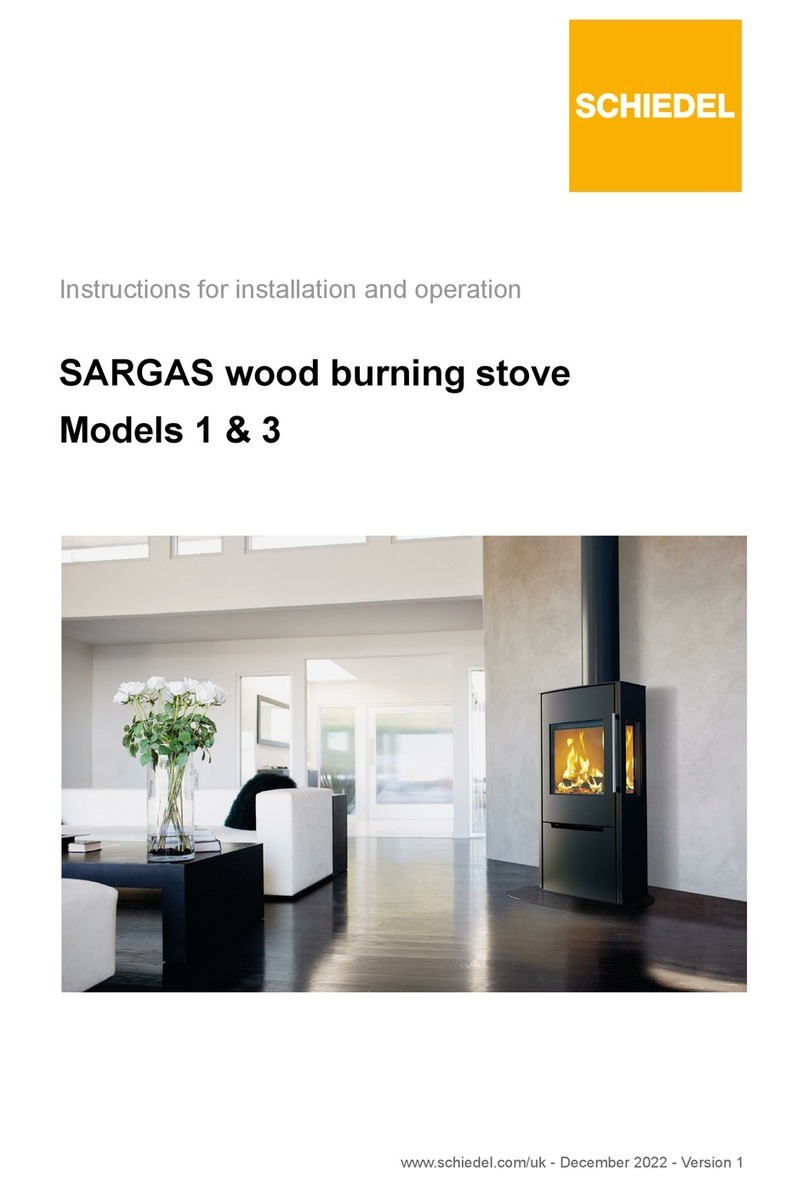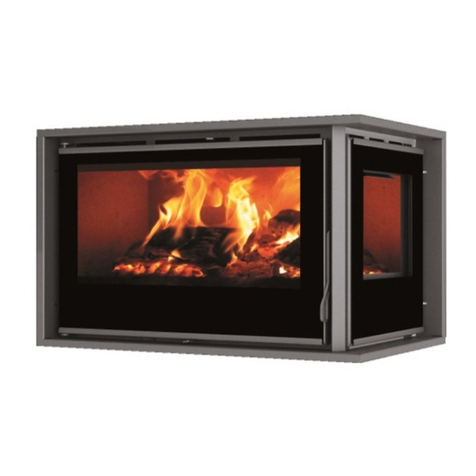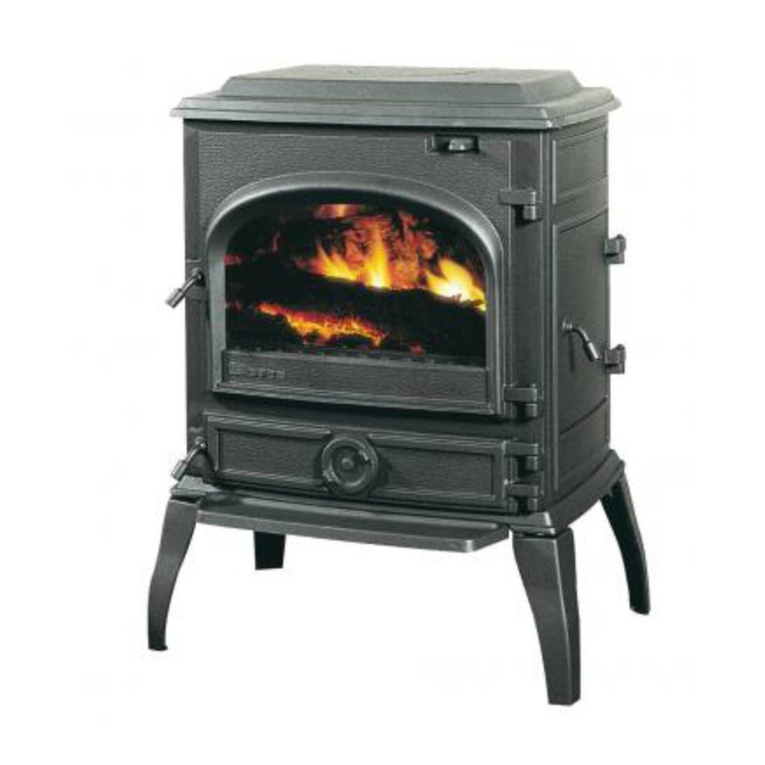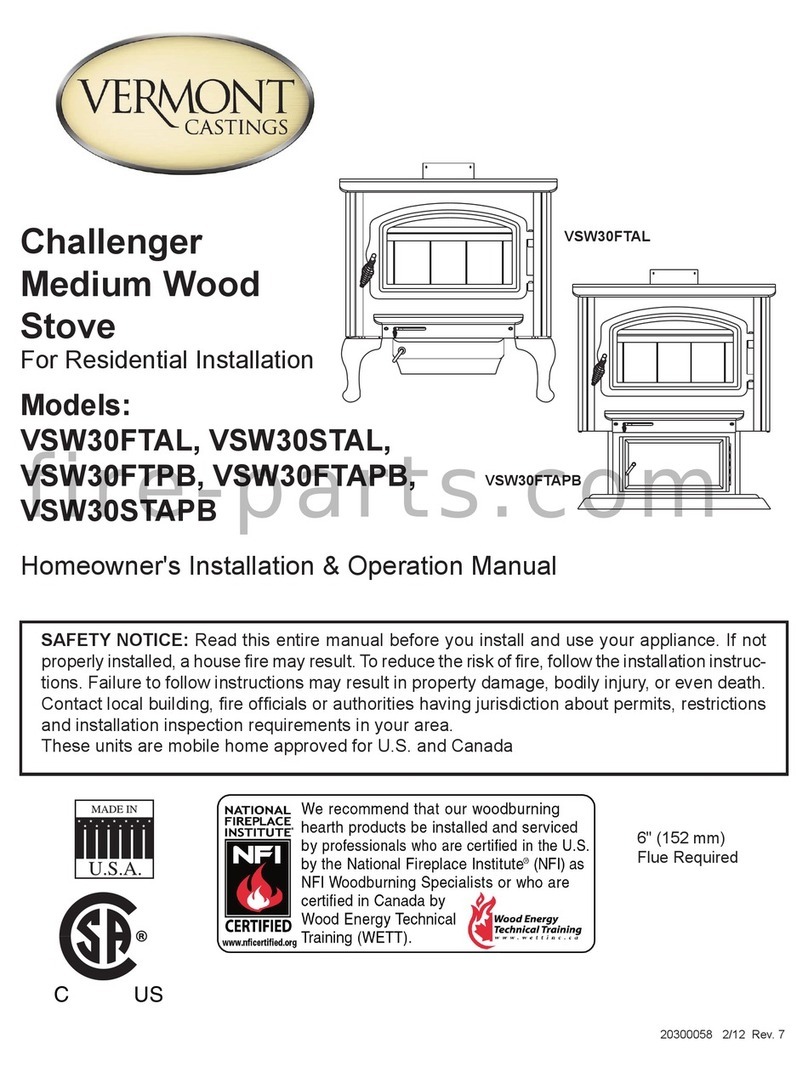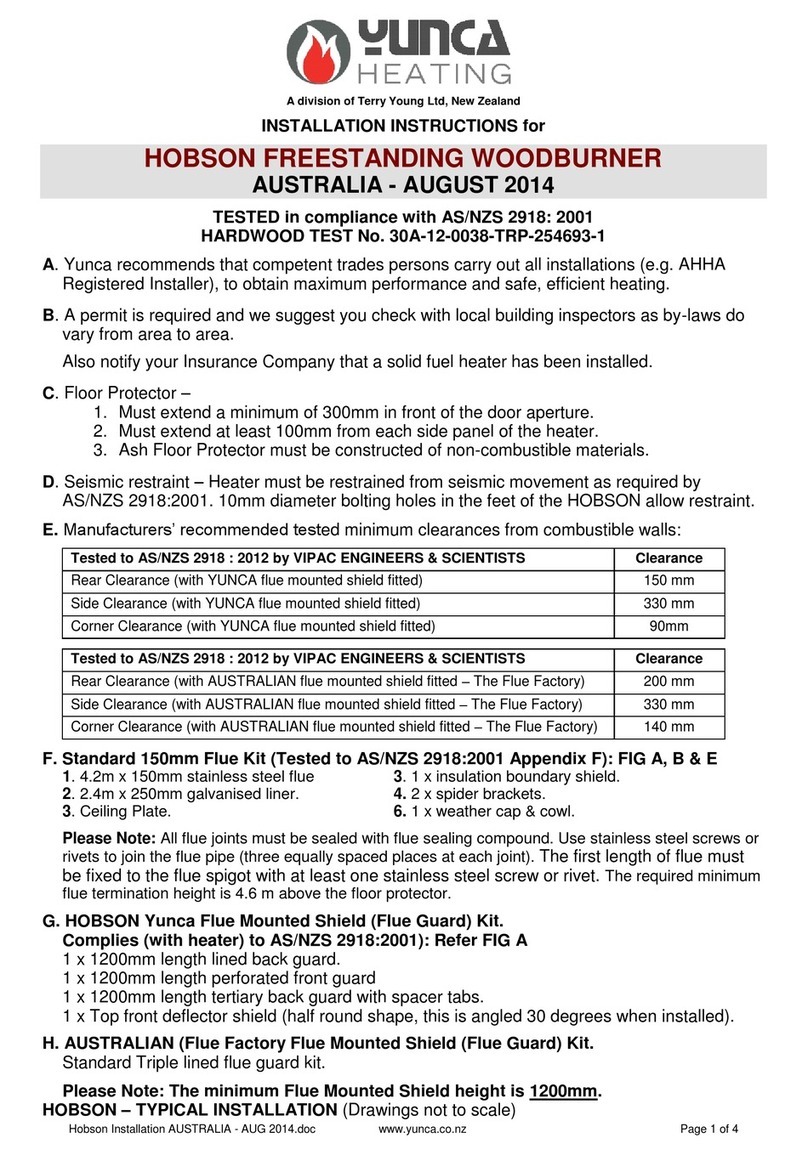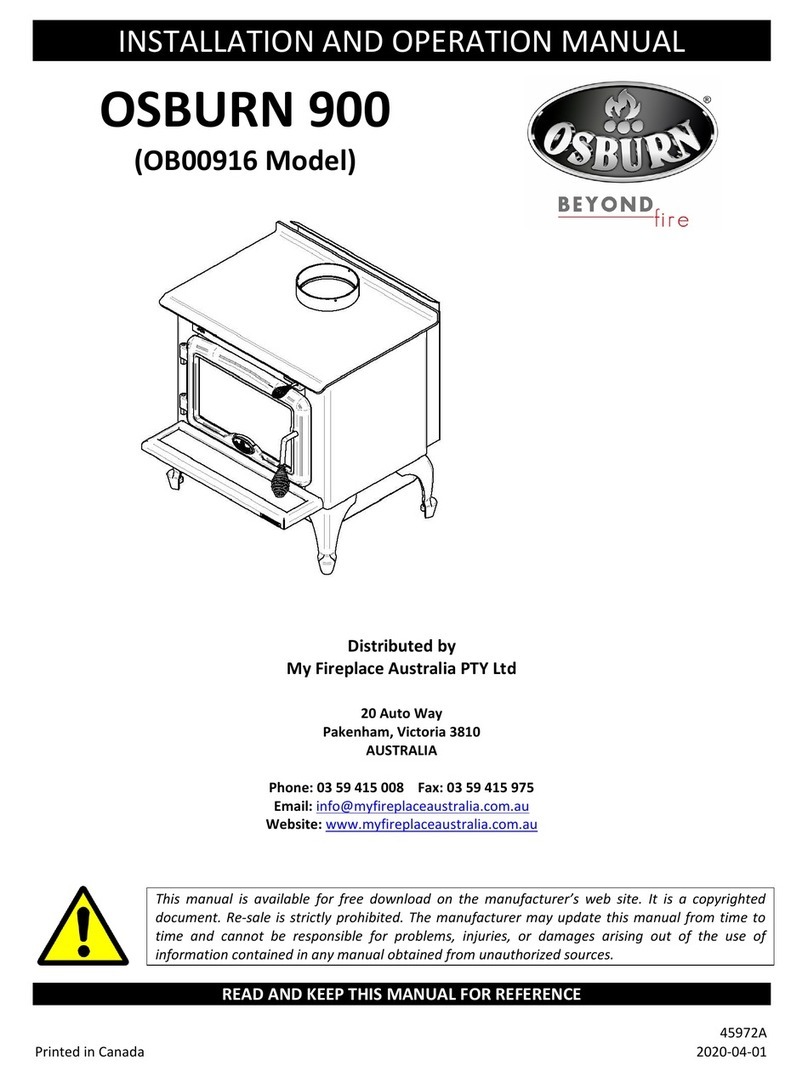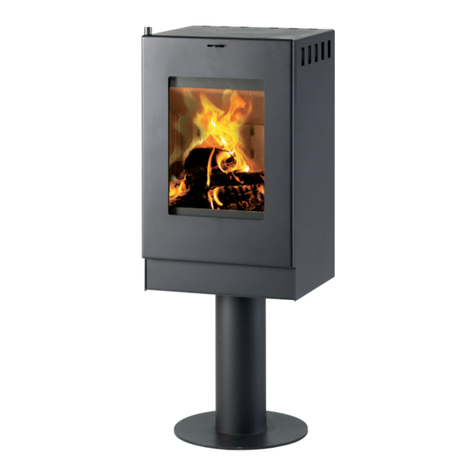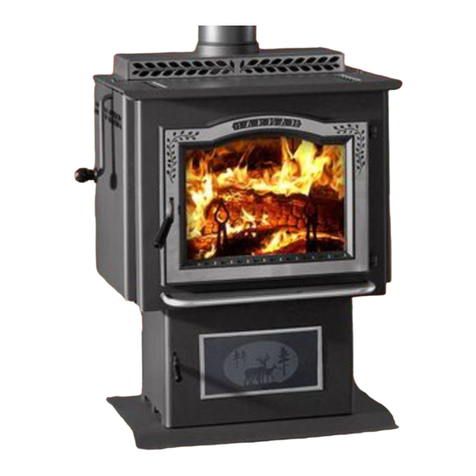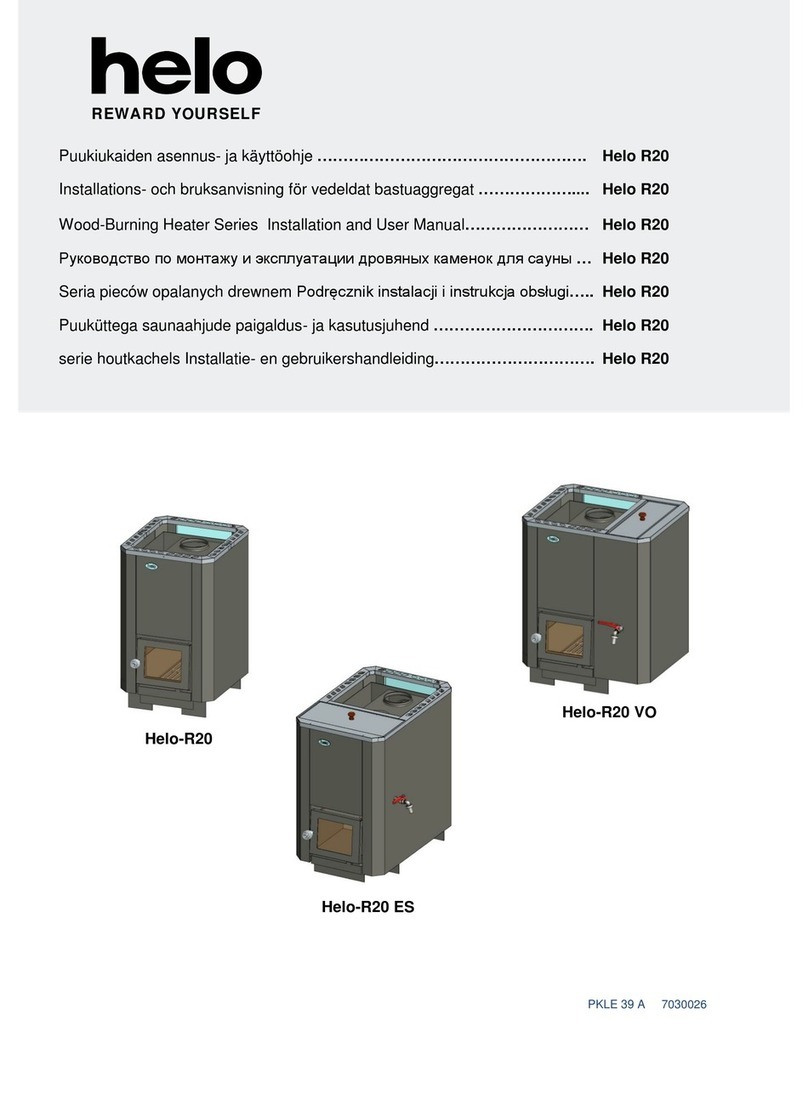
Revised 27-06-13
No purpose provided ventilation is normally required for stoves rated under 5KW. However for
newer build properties or properties that have been modified so that the design air permeability is
less than 5m3/h.m2 a permanent ventilator will need to be fitted. Approved document J of the
building Regulations gives more detailed information. For each KW above 5KW, 550 sq mm of
fixed ventilation is required –i.e. a stove rated at 8KW would require 3 x 550 sq mm = 1650 sq
mm of fixed ventilation. If more than one appliance is installed in the same room, the ventilation
requirements for each appliance must be added together.
There must not be an extractor fan fitted in the same room as the stove as this can cause the stove
to emit fumes into the room.
Installation
Thermostat
We recommend that a thermostat control is fitted to your boiler which is used to automatically
regulate the water output temperature and prevent water overheating in the boiler. The thermostat
must be fitted as per the manufacturer‟s instructions which are included with the thermostat.
Chimney
The chimney height and the position of the chimney terminal should conform to Building
Regulations. Check that the chimney is in good condition, dry, free from cracks and obstructions.
The diameter of the flue should not be less than 150mm and not more than 200mm. If any of
these requirements are not met, the chimney should be lined by a suitable method. The chimney
must be swept before connection to the stove.
Where the chimney is believed to have previously served an open fire installation, it is possible
that the higher flue gas temperature from the stove may loosen deposits that were previously
firmly adhered, with the consequent risk of flue blockage. It is therefore recommended that the
chimney be swept a second time within a month of regular use after installation. If you have any
doubts about the suitability of your chimney, consult your local dealer/stockist.
If there is no existing chimney then either a prefabricated block chimney or a twin-walled
insulated stainless steel flue to BS 1856-1 can be used. These chimneys must be fitted in
accordance with the manufacturer‟s instructions and also please refer to the current issues of
British Standards BS EN 15287-1:2007 for design, installation and commissioning of chimneys.
Electrical Connection
The installation of any electrical services during the installation of this boiler and the associated
heating system must be carried out by a registered competent electrician in accordance with the
requirements of the latest issue of BS7671.
Flue Draught
A flue draught of minimum 1.2mm to a maximum 2.5mm water gauge is required for
satisfactory appliance performance. The flue draught should be checked under fire at
high output and, if it exceeds the recommended maximum, a draught stabiliser must be fitted so
that the rate of burning can be controlled and to prevent overfiring.
Connection to the Chimney
An existing fireplace opening can be bricked up or sealed with a register plate. A short length of
flue pipe of a minimum 150mm internal diameter may then be used to connect the stove to the
chimney. This flue pipe should conform to Building Regulations. Ensure that the pipe end is no
closer than 76mm to the side or rear chimney walls.
Ideally, the old fireplace should be filled in so that there is a smooth streamlined entry into the
flueway. The length of any horizontal run of flue pipe must not exceed 150mm.

















